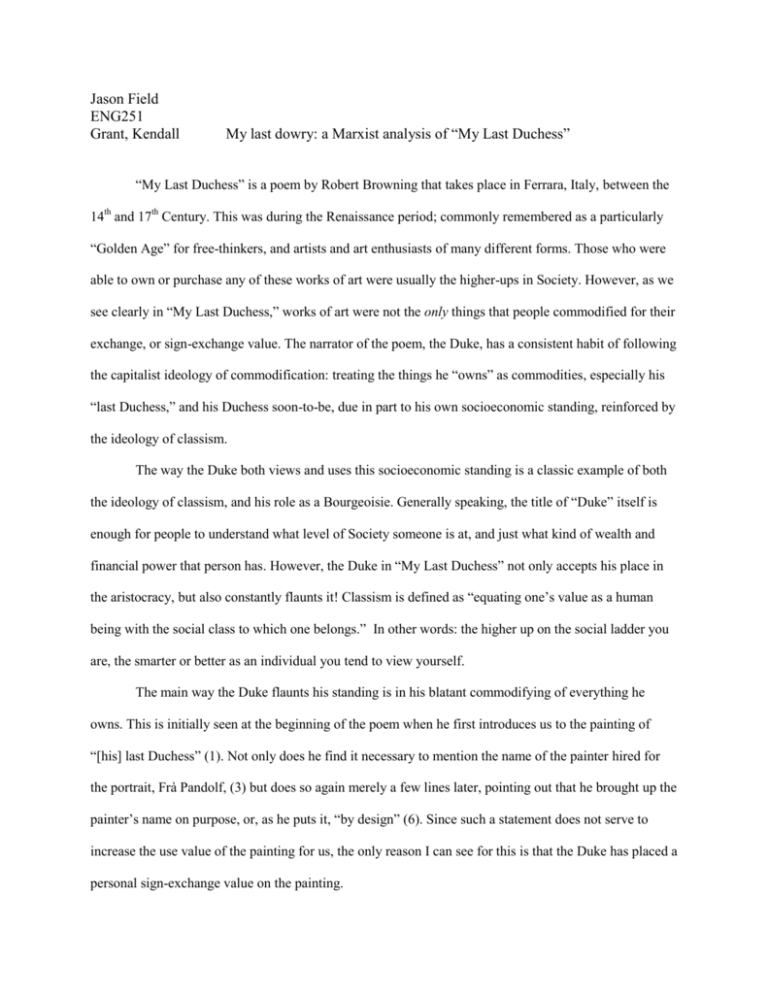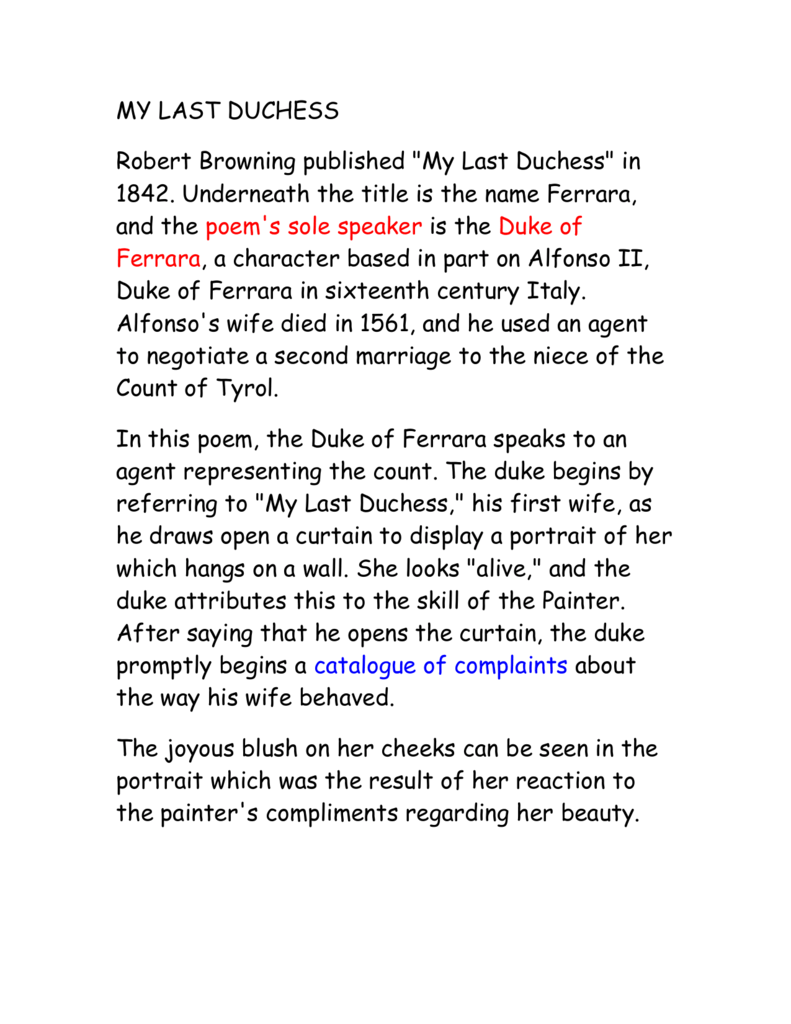Robert Browning's "My Last Duchess" is a dramatic monologue written in the voice of the Duke of Ferrara, who is speaking to an envoy of the Count of Tyrol. The Duke is describing a portrait of his last duchess, which he has had painted to show off her beauty. As he speaks, it becomes clear that the Duchess was a strong-willed woman who did not always do as she was told, and that the Duke had her killed because of this.
The poem begins with the Duke showing off the portrait to the envoy, saying "That's my last Duchess painted on the wall, / Looking as if she were alive." This opening line sets the scene and introduces the main subject of the poem, the Duke's last duchess. It also hints at the Duke's ego and his desire to show off his possessions, including his wife.
The Duke goes on to describe the Duchess's beauty and her charm, saying "I call / That piece a wonder, now: Fra Pandolf's hands / Worked busily a day, and there she stands." Here, the Duke is emphasizing the skill of the artist who painted the portrait and the beauty of the Duchess. However, the use of the word "wonder" suggests that the Duke sees the Duchess as an object rather than a person.
As the Duke continues to speak about the Duchess, he reveals that she was a strong-willed woman who did not always do as she was told. He says "She had / A heart—how shall I say?—too soon made glad, / Too easily impressed; she liked whate'er / She looked on, and her looks went everywhere." This passage shows that the Duchess was easily pleased and that she enjoyed many things, suggesting that she was curious and open-minded. However, the Duke sees this as a flaw, saying "Sir, 'twas not / Her husband's presence only, called that spot / Of joy into the Duchess' cheek." He is implying that the Duchess was not always happy when she was with him, and that she derived joy from other sources.
The Duke's resentment towards the Duchess becomes clearer as he continues to speak, saying "I gave commands; / Then all smiles stopped together. There she stands / As if alive." This passage reveals that the Duke had the Duchess killed because she did not always do as she was told. The use of the word "commands" suggests that the Duke saw the Duchess as his property and that he expected her to obey him. The line "Then all smiles stopped together" is particularly chilling, as it shows that the Duke had the power to end the Duchess's life simply because she did not always conform to his wishes.
In the final lines of the poem, the Duke reveals his true feelings towards the Duchess, saying "I choose / Never to stoop." This suggests that the Duke sees himself as superior to the Duchess and that he believes he is entitled to control her. The use of the word "choose" emphasizes the Duke's power and his belief that he has the right to make decisions for others.
Overall, "My Last Duchess" is a powerful and disturbing poem that explores the themes of power, control, and ego. Through the voice of the Duke, Browning reveals the dangerous and destructive consequences of these themes, as the Duke's desire for control leads him to kill the strong-willed and independent Duchess.







